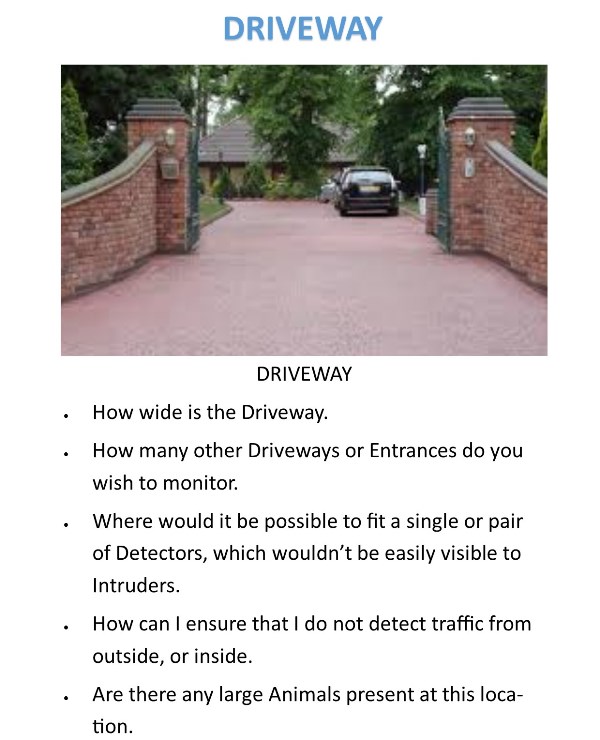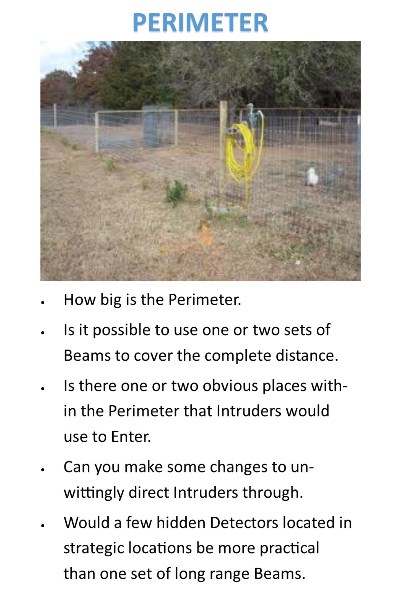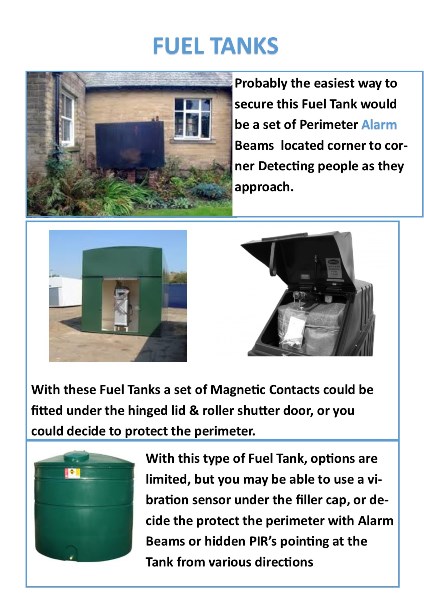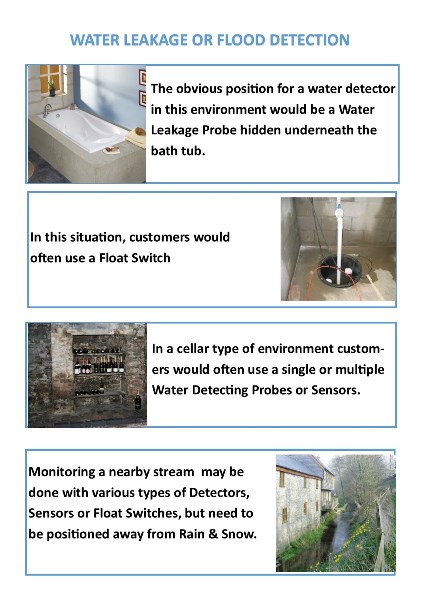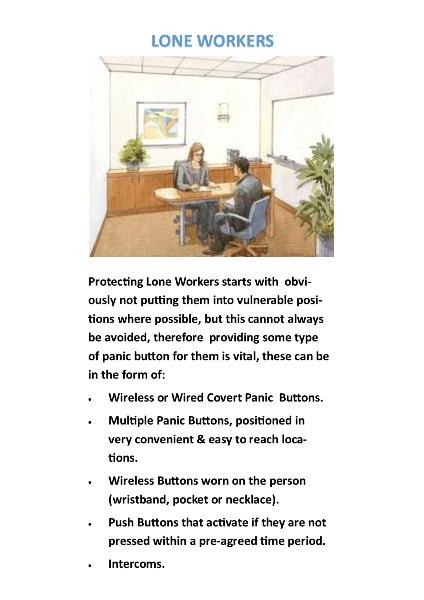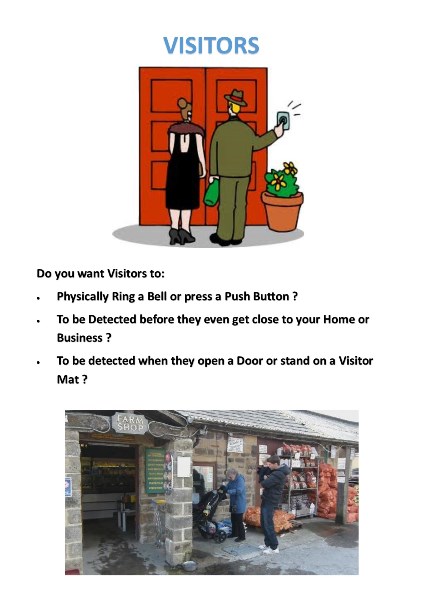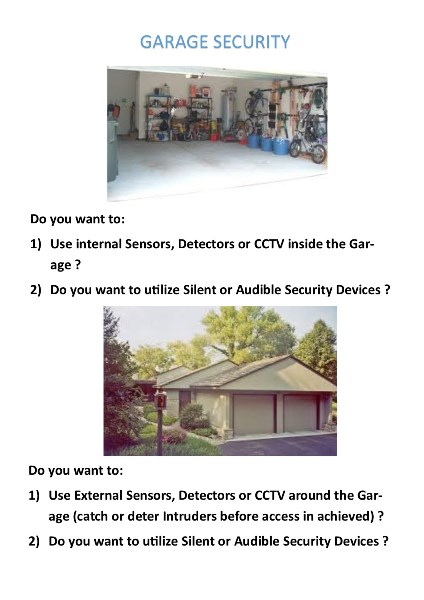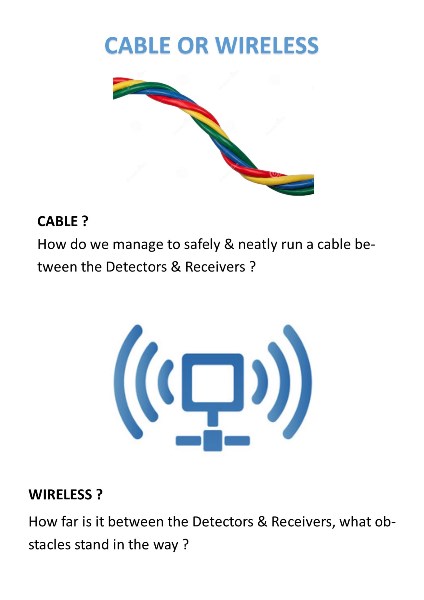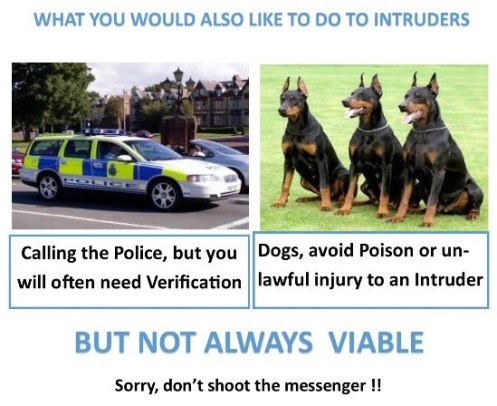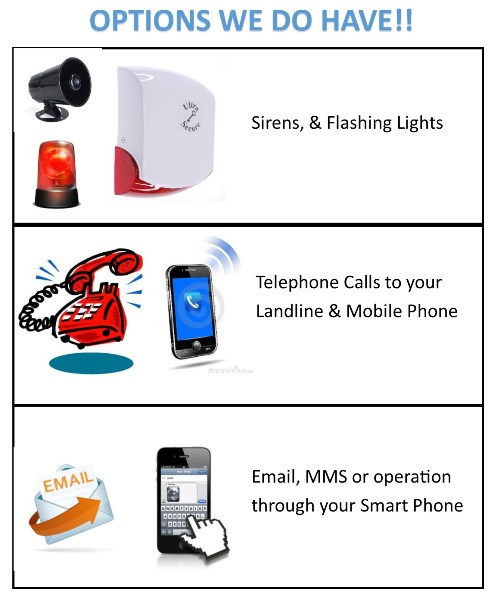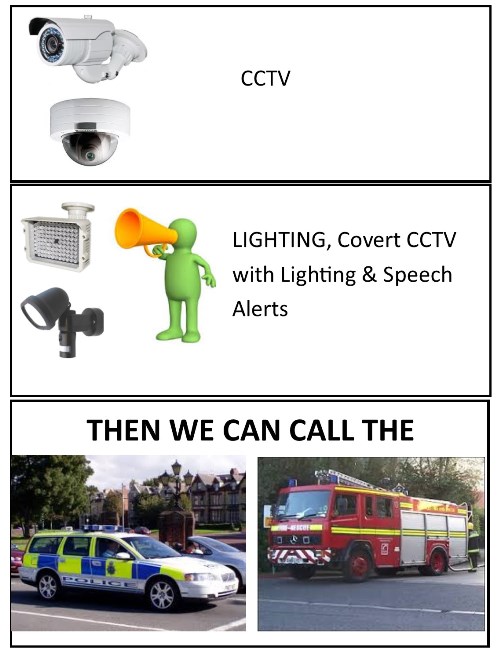D.T.R. this Principle can be related to most types of Security & Safety Systems
D.T.R = Detection, Transmission & Reception
This simple principle should be used whilst planning all types of Security & Safety Systems, regardless of what your are protecting or trying to achieve, including:
- Internal Home Security Alarm Systems.
- Perimeter Alarms & Alerts.
- Driveway Alarms & Alerts.
- Fuel Tank Alarms.
- Personal Safety Alarms.
- Water & Flood Alarms.
- Shed or Garage Silent or Audible Alarms.
- Visitor Alert Systems.
The list is endless, but these principles can & do relate to everyone of them, in one way or other.
The first criteria is D = Detection:
Decide what you want to detect & where, decide on how many locations need to be protected, decide how best to monitor & cover each location, some examples listed below:
- How many locations do you need to protect?
- How best to protect each location? (different locations will possibly require different solutions within the same Security system)
In this example, if you were looking to protect the complete house then you would simply choose an Alarm System, full information can be found within the Ultra Secure Direct ‘DIY or Professional Alarm Article‘
Helpful article from Ultra Secure Direct on choosing a Driveway Alarm
Helpful article about choosing Active or Passive Beams to protect your Perimeter
Fuel Tank by their nature are very difficult products to Secure and in our opinion there is no one solution which can be used for all types of tanks & locations, your principle choice when choosing which sensors to use are basically:
- Sensors fitted directly onto the Tank: perhaps magnetic contacts under a hinged lid, or a vibration sensor hidden under the filler cap.
- Detectors located around the perimeter of the Tank: these can be sets of beams creating a complete boundary around the tank, or hidden sensors directed at the tank from various locations.
Our opinion is that if possible, it is better to protect the perimeter of a Tank, because it is not uncommon for thieves to simply puncture a tank a drain the contents which also creates a major problem with environmental issues regarding the excess fuel not stolen.
Detecting Water Leaks or potential Flooding can be a tricky proposition and requires thought on which type of Detectors are used, how many Detectors are used, and the exact location of each Detector. It is even more difficult to monitor outdoor situations due to the fact that you need to monitor rising water at the same time as avoiding falling water & snow.
Deciding what type & where the Panic Buttons should be position for your Lone Workers is the first stage, followed by working out how to get the signal back to the chosen Control Panel (discussed later on within this article) together with the most important factor, what actually happens if the Panic Buttons are activated (discussed in the later parts of this article).
You can choose to use various types of Security Sensors or CCTV inside the Shed catching any Intruder in the act, or you can choose to use a range of Security devices to try to catch or deter potential Intruders before they gain access to the Shed.
Both options have their merits:
- Inside Security will generally be more affordable, and less prone to being triggered by Animals, but they have gained access by the time they are detected, damage already being done.
- Outside Security is by far the most effective method as it can catch or deter an Intruder before any damage has been done, but it is generally more expensive to do, and more thought needs to be given choosing the correct type of systems to avoid false activations from wildlife etc.
You can also choose to use Silent or Audible types of Security with both options, some customers will choose to use both and perhaps have the Outside Security working on the silent principle & the Inside Security working as a full on audible Security System.
You can choose to Detect Visitors in many different types of ways, ranging from:
- A standard Push Button that the Visitor physically presses.
- A Bell fitted to the Entrance Door.
- A Sensor located outside the Entrance (this can even be a few hundred metres away).
- A Sensor fitted to a Door, or under an Entrance Mat.
- Using CCTV.
You may need a combination of methods to cover different times of day & different days.
You can choose to use various types of Security Sensors or CCTV inside your Garage catching any Intruder in the act, or you can choose to use a range of Security devices to try to catch or deter potential Intruders before they gain access to the Garage.
Both options have their merits:
- Inside Security will generally be more affordable, and less prone to being triggered by Animals, but they have gained access by the time they are detected, damage already being done.
- Outside Security is by far the most effective method as it can catch or deter an Intruder before any damage has been done, but it is generally more expensive to do, and more thought needs to be given choosing the correct type of systems to avoid false activations from wildlife etc.
You can also choose to use Silent or Audible types of Security with both options, some customers will choose to use both and perhaps have the Outside Security working on the silent principle & the Inside Security working as a full on audible Security System.
By now, you should have got the message about thinking through clearly what type of Sensors, Detectors, Push Buttons are required, and where they are best positioned (regardless of the type of Security or Safety System you are designing) !!
The second criteria is T = Transmission:
There is no point in choosing the best Detection method, if you cannot then connect the chosen Detectors to the Receivers or Control Panels, the first step is to choose from:
- Wired: decide how you can safely, quickly & easily connect all the chosen Detectors to the Receivers or Control Panels, this can be a difficult proposition in many applications.
- Wireless: decide how you can achieve a reliable connection from all the chosen Detectors to the Receivers or Control Panels, vital information is the distance & terrain (please click here for further information about wireless transmission).
The third & most important criteria is R = Reception:
There is no point at all, in going to all the trouble of working out the best type of Detection, then how to connect the chosen Detectors to your Receiver or Control Panel if you do not know what Result or Reaction you want in the event of an ACTIVATION.
Quite often you will utilize one, two or even three simple products to create the right type of reactions to the activation of your carefully chosen Detectors, these may be to cover different times of the day or year.
D.T.R
So Don’t Get Confused or Overwhelmed , always split the process into these three sections, concentrate on one section at a time, and you will not be far away from designing a system to meet your requirements.
Even if you fail to completely design your ideal Security or Safety System, you will far better positioned to contact suppliers for final advice before making a purchase if you intend to carry out the installation yourself, and much better positioned to understand the basics should you decide to get a local contractor to give you a quotation for a complete installation service.
Ultra Secure Direct spend hours every day giving customers this type of advice, and find it much more productive for both parties when talking to customers who have already worked out these basic requirements, should you need their advice please contact them via Telephone, Email or Live Chat (click here for contact details), or book an appointment for one of their Security Consultations.
By Mark Walter Google



